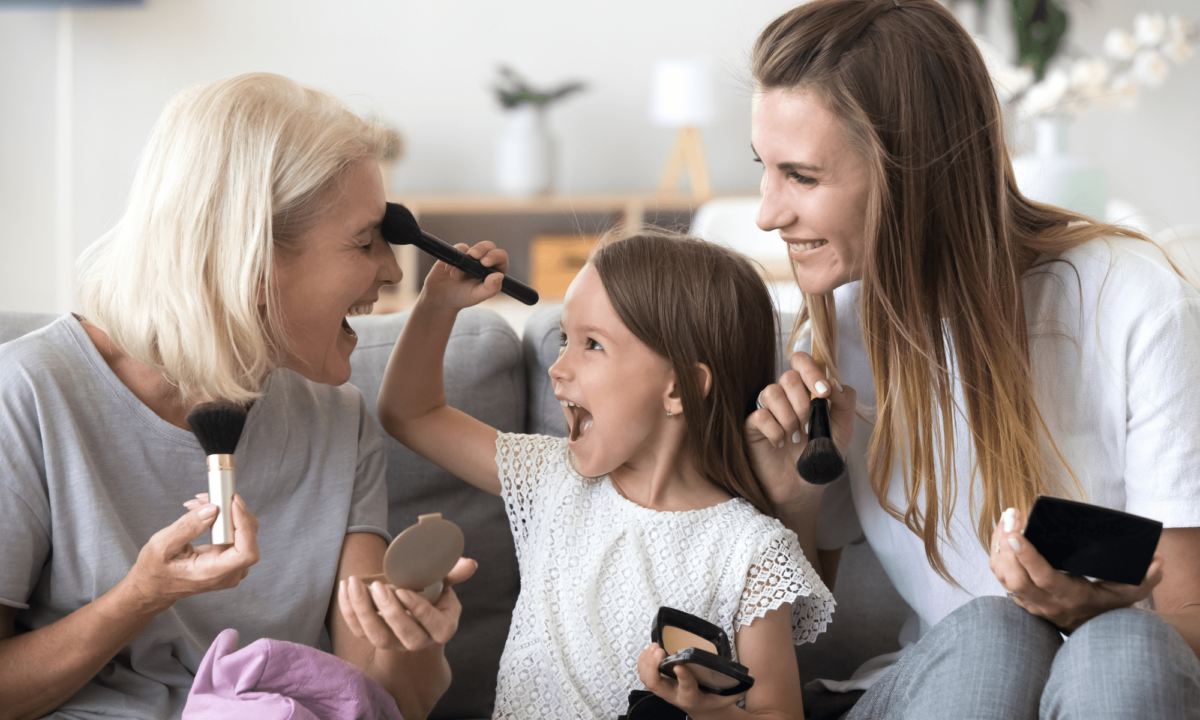
Estée Lauder once said to “never underestimate any woman’s desire for beauty.” In fact, at the age of 9 or 10 my sister and I could hardly wait for our parents to go out on Saturday evenings so we could secretly try our mom’s emerald green or sky blue eye shadows and glossy pink lipstick. Today I moisturise my face in the morning, put on light, natural make-up before going to work and anti-age serums and creams before going to sleep. Not to mention the perfumes, nail polishes, hair products…my list is long and there are so many temptations: amazing new products to try. I follow my influencers, take notes of the products they have just discovered and look for them online. Beauty products have become a necessity. They are offered by so many retailers and online stores that the competition has become fierce, offering discounts, special prices, gifts or loyalty programs with rewards and benefits.
So why are customer retention and loyalty programs
important for players in the beauty industry?
Customer retention strategies, like upsell and cross sell campaigns and loyalty programs are a great fit for the cosmetic sector simply because beauty products are purchased regularly and they tend to have a relatively low basket value. Customers often base their decision on price or shopping experience therefore if brands don’t want to lose their customers after a single purchase they’d better use customer retention or loyalty strategies to make them come back and even fall in love with the brand.
The queen of beauty loyalty programs: Sephora’s Beauty Insider
Probably the most inspiring loyalty program known in the industry is Sephora’s Beauty Insider. It was launched in 2007, using the brilliant idea to reward members for purchases with select product samples. Two years later Sephora introduced a second tier, called VIB (Very Important Beauty Insider) for members spending more than 350 dollars a year, offering additional rewards for more purchases. In 2013 a third tier, ROUGE, was introduced for members spending over 1,000 dollars, and this exclusive new level offered invitations to special events, first access to new products and limited editions. As digital loyalty platforms have been evolving, in 2016 a Rewards Bazaar was added to the program, where members could exchange their points into exciting products and sets.So far so good, you could say. Nothing revolutionary, nothing outside the box. Nothing that could explain why the program boosts 25 million members.
In 2017 Sephora redesigned the program again to leverage emotional drivers of loyalty, including happiness, trust, surprise and delight, anticipation and especially pride. As Allegra Stanley, Sephora’s VP of Loyalty said “ We believe these emotional rewards are the new currency of loyalty”.
The redesigned program is certainly
more heavily weighted to the emotional side,
although it has and always will have a transactional component as well.
In 2020 Sephora took the loyalty program to a next level again by expanding the experimental component. Such unique experiences included wine tasting for two in the Francis Ford Coppola Winery, a call with celebrity brow expert Jared Bailey, a signed copy of a Rihanna book and a special collection of Sephora items. In fact, transactional drivers remain only 27% of the holistic measure of customer satisfaction and emotional drivers continue to grow in importance.
Sephora’s loyalty program is a great inspiration for all marketers working in the beauty industry. But we also know that such advanced loyalty programs have a high price tag and not all businesses can afford it. So should they just wait and see how their customers defect to their competitor and never come back? Absolutely not. Armed with a marketing automation tool even businesses with a relatively low budget can start to implement some basic customer retention strategies. So let’s take a look at the most important ones.
although it has and always will have a transactional component as well.
In 2020 Sephora took the loyalty program to a next level again by expanding the experimental component. Such unique experiences included wine tasting for two in the Francis Ford Coppola Winery, a call with celebrity brow expert Jared Bailey, a signed copy of a Rihanna book and a special collection of Sephora items. In fact, transactional drivers remain only 27% of the holistic measure of customer satisfaction and emotional drivers continue to grow in importance.
Sephora’s loyalty program is a great inspiration for all marketers working in the beauty industry. But we also know that such advanced loyalty programs have a high price tag and not all businesses can afford it. So should they just wait and see how their customers defect to their competitor and never come back? Absolutely not. Armed with a marketing automation tool even businesses with a relatively low budget can start to implement some basic customer retention strategies. So let’s take a look at the most important ones.
Customer retention with Marketing Automation
Customer retention refers to a business’ ability to retain repeat customers and to increase their lifetime value. As boring as this definition sounds, as important it is for your business, because customer acquisition costs five to twenty five times more than retention. So if you are smart, focus on retention and your brand will thrive. Effective customer retention is also about building and maintaining relationships and creating values for your customers to help them achieve the goals they had in mind when purchasing your products or services.
Marketing automation is an excellent tool
to put customer retention strategies into action.
First of all it allows automated communication. But not in an impersonal, mechanical way. You can send highly personalised, relevant messages and offers because the software tags your clients based on their behaviour online or offline, segments them and allows you to send the most relevant messages possible at the right time, through the best channel. So your customers can start to feel that you understand their needs and you are doing your best to find the best solution for them.
You can also send welcome mails, regular newsletters or birthday messages automatically, just to mention the best performing campaign types. These three strategies serve you to have a more personal relationship with your customers and to influence them into thinking more often about your brand.
Another important objective may be to increase the average basket value. To achieve that goal AI6’s marketing automation specialist, Giulia Di Caprio recommends beauty ecommerces upsell or cross sell campaigns. “Upselling and cross-selling can be valuable strategies for almost any beauty online store. Our customer cases have shown that approximately 10-30% of e-commerce sales can be directly attributed to these additional product proposals.” – says Giulia. “One of our clients, Silvia Cavani sells exclusive perfume brands offline and as of recently also online. Although we departed with strong customer acquisition marketing automation strategies to boost the traffic on the new ecommerce, turning one-time buyers into loyal customers is our next great objective. We achieve that with automated upsell and cross sell campaigns, using for example frame recommendation, presenting sets of products, like shampoo + conditioner, with the information about combined purchase discount.”
Taking customer retention further – Loyalty Programs
Customer loyalty goes beyond financial transactions. Loyalty means growth while retention means fighting decline.A loyalty program is a great way to improve customer retention and keep existing partners happy and loyal. But a loyalty program is only efficient if it is designed strategically.
The Italian perfume brand, Acqua dell’Elba boasts 27 branded stores and a distribution network comprising 580 high-quality perfume shops all over Italy. They were looking to create a seamless experience for their customers across all channels, building Emotional Loyalty and last but not least increasing customer retention.
To achieve these ambitious goals they opted for an advanced, omnichannel loyalty platform, ANTAVO, that has already improved Italian-born fashion retailer, LuisaViaRoma’s retention rate by 59%.
The platform, however, is just an empty toolbox
without the right loyalty strategy,
that requires high level marketing skills, broad business experience and a good knowledge of the platform.
AI6’s senior loyalty strategist and CEO, Stefano Robolas partnered with the marketing team of Acqua dell’Elba to create a loyalty strategy for the brand. “Getting to know the customers was the first challenge we resolved with a Customer Personas workshop and analyses.” – said Stefano. “We created an advanced, hybrid program, mixing multiple elements from tiered, and perks program types with exciting emotional rewards.” He added that “In loyalty there is no one-size-fits all approach. All programs are completely unique and personalised, fitting the brand’s business strategy best. Only such an approach brings the desired results.”

Head of Sales and Marketing
Zsuzsanna Csuthi is Head of Sales and Marketing, overseeing strategic development, global sales and marketing for the company. Zsuzsanna joined AI6 in September 2019 as Head of Strategic Development, and previously held international sales management positions at multinational companies like General Electric, Axis Communications and Motorola Solutions.

Head of Sales and Marketing
Zsuzsanna Csuthi is Head of Sales and Marketing, overseeing strategic development, global sales and marketing for the company. Zsuzsanna joined AI6 in September 2019 as Head of Strategic Development, and previously held international sales management positions at multinational companies like General Electric, Axis Communications and Motorola Solutions.


